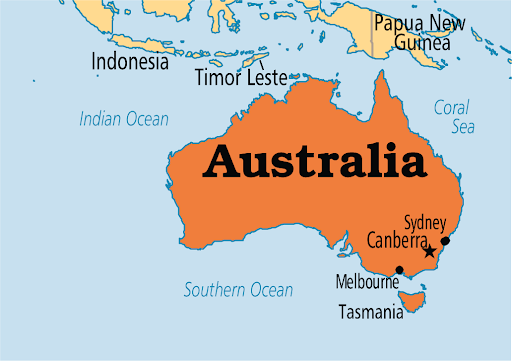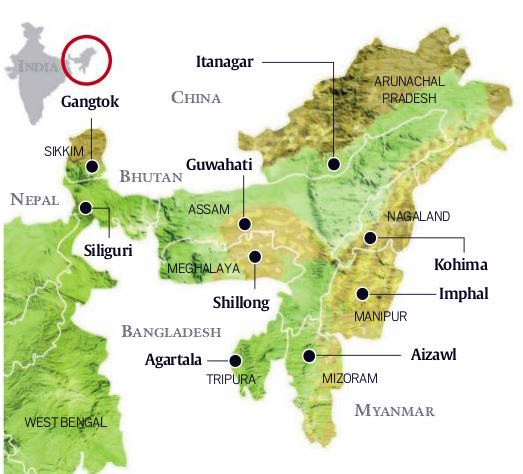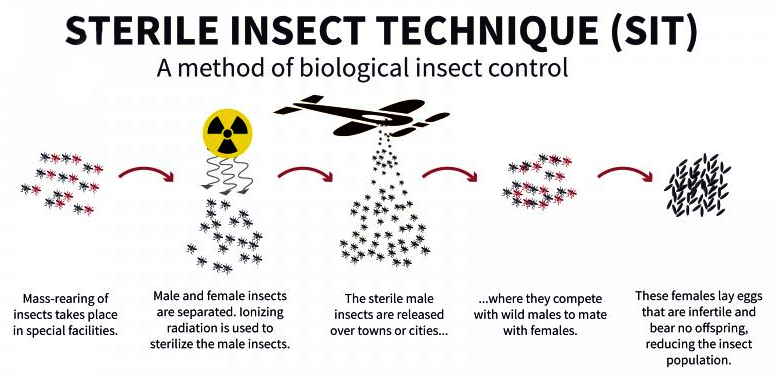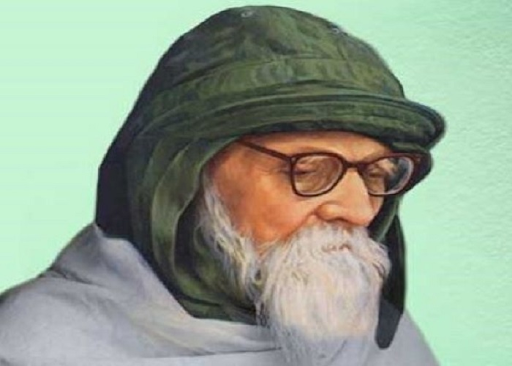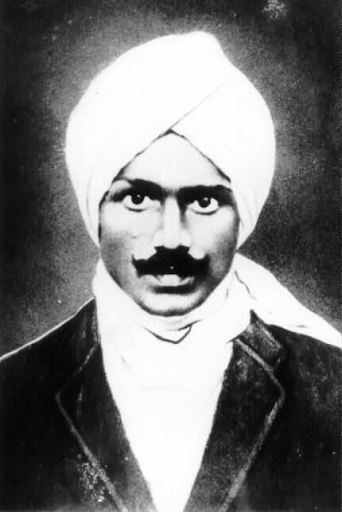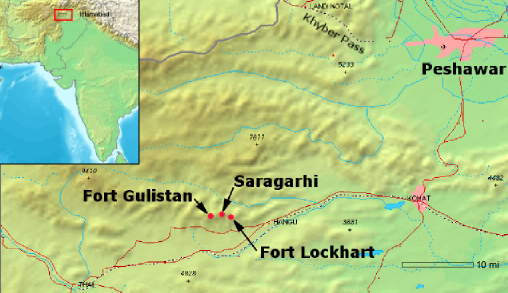India-Australia First 2+2 Dialogue
Why in News
Recently, the foreign and defence ministers of India and Australia held the first India-Australia 2+2 Ministerial Dialogue in New Delhi.
- The inaugural dialogue is held in pursuant to the elevation of India-Australia bilateral relations to comprehensive strategic partnership during the India-Australia Leaders’ virtual summit in 2021.
Key Points
- Focus on Indo-Pacific: To maintain an open, free, prosperous and rules-based Indo-Pacific region (in line with the United Nations Convention on the Law of the Sea (UNCLOS)).
- To support India’s Indo-Pacific Oceans’ Initiative.
- Need for renewed efforts by the Quad member countries to expand cooperation in the region.
- Focus on Supply Chain Resilience Initiative: To work together through multilateral, regional and plurilateral mechanisms to diversify supply chains between trusted and reliable trading partners for critical health, technology and other goods and services.
- In this context, they welcomed the launch of the Supply Chain Resilience Initiative by the Trade Ministers of India, Australia and Japan.
- Keeping-up with the Momentum: Decided to meet at least once every two years in this format to keep up the momentum.
- Shared Vision on Afghanistan: Displayed a common approach to the Afghan crisis, after the recent Taliban takeover of Afghanistan.
- India held that the policy is summed up by the United Nations Security Council Resolution 2593.
- UNSC Resolution 2593, emphasises most of all, that Afghanistan must not allow its soil to be used in any manner by any body for terrorism.
- Countering Terrorism: To continue to work together on counter terrorism; countering of radicalization and on the proposed UN Comprehensive Convention on International Terrorism.
- Strengthening Bilateral Relationship: Discussed strengthening their relationship in bilateral trade, vaccines, defence production, community links, maritime security, cyber and climate cooperation.
- Cooperation on Covid-19: Agreement was reached to deepen cooperation in vaccine manufacturing, including under the Quad framework, and to deliver high quality vaccines to their Indo-Pacific partners.
- Researchers of both countries are working together to advance Covid-19 screening and study the future health effects of the virus through projects funded by the Australia-India Strategic Research Fund.
- Defence Relationship: Australia has invited India for participation in future Talisman Sabre exercises which will raise interoperability while both sides explore longer term reciprocal arrangements in logistics support.
- Economic Agreements: There was renewed support expressed for finalization of bilateral Comprehensive Economic Cooperation Agreement.
- Apart from this, both countries also pitched for early resolution of the issue of taxation of offshore income of Indian firms under the India Australia Double Taxation Avoidance Agreement.
- Others: While reaffirming support for the Indian candidacy for permanent membership of the UNSC, grants of Australian $ 1 million to the International Solar Alliance, and Australian $10 million to the Coalition for Disaster Resilient infrastructure (both India-led initiatives).
‘2+2’ Dialogue
- 2+2 Ministerial is the highest-level institutional mechanism between the two countries.
- It is a format of dialogue where the defence/foreign ministers or secretaries meet with their counterparts from another country.
- India holds such talks with Australia, Japan and the USA.
India-Australia Relations
- Geo-Political Relations: Over the past few years, China’s actions– including extensive island building in the South China Sea has heightened concerns in a number of countries around the world.
- This has led to formation of Quad (India, Australia, Japan and US) grouping.
- Defence Relations: Bilateral naval exercise (AUSINDEX), Ex AUSTRA HIND (Bilateral Exercise with Army), EX PITCH BLACK (Australia’s multilateral air combat training exercise) and multilateral Malabar Exercise (comprising Quad countries).
- The countries have signed the Mutual Logistic Support Arrangement (MLSA).
- Multilateral Cooperation:
- Both are members of the Quad, Commonwealth, Indian Ocean Rim Association (IORA), ASEAN Regional Forum, Asia Pacific Partnership on Climate and Clean Development, and have participated in the East Asia Summits.
- Both countries have also been cooperating as members of the Five Interested Parties (FIP) in the World Trade Organization context.
- Australia is an important player in Asia Pacific Economic Cooperation (APEC) and supports India's membership of the organisation.
- Other Diplomatic Engagements: A Civil Nuclear Cooperation Agreement was signed in September 2014.
- The Mutual Legal Assistance Treaty (MLAT) and the Extradition Treaty, which were signed in June 2008.
- Further, recently India-Australia Circular Economy Hackathon (I-ACE) was also organised.
US-India Strategic Clean Energy Partnership (SCEP)
Why in News
Recently, the revamped US-India Strategic Clean Energy Partnership SCEP was launched during the ministerial meeting of the Petroleum and Natural Gas Ministry with the US Ministry of Energy.
- The SCEP was launched in accordance with the US - India Climate and Clean Energy Agenda 2030 Partnership announced by both countries at the Leaders’ Summit on Climate held earlier this year (2021).
Key Points
- US-India Agenda 2030 Partnership:
- The aim is to create stronger bilateral cooperation on actions in the current decade to meet the goals of the Paris Agreement.
- The Partnership will proceed along two main tracks: the Strategic Clean Energy Partnership and the Climate Action and Finance Mobilization Dialogue.
- India elevated the India-US energy dialogue to a strategic energy partnership in 2018.
- Revamped Strategic Clean Energy Partnership (SCEP):
- Addition of a fifth Pillar on Emerging Fuels (cleaner energy fuels).
- With this, the SCEP inter-governmental engagement now spreads across five pillars of cooperation - Power and Energy Efficiency, Responsible Oil and Gas, Renewable Energy, Sustainable Growth and Emerging Fuels.
- Support India in achieving its goal of installing 450GW of renewable energy capacity by 2030.
- A new India-U.S. Task Force on Biofuels was also announced.
- Reviewed India-US Civil Nuclear Energy Cooperation:
- The Indo-US nuclear cooperation agreement was signed in 2008.
- A major aspect of the Deal was that the Nuclear Suppliers Group (NSG) gave a special waiver to India that enabled it to sign cooperation agreements with a dozen countries.
- Transformation of the Gas Task Force:
- It will be the India-US Low Emissions Gas Task Force.
- It will focus on addressing India’s natural gas policy, technology, and regulatory barriers by promoting efficient and market-driven solutions aimed at meeting India’s growing energy demand, and greenhouse gas emission reduction targets.
- Institutionalism of India Energy Modeling Forum:
- Six Task Forces were constituted for carrying out research and modelling in different areas.
- There will be deliberations on Energy Data Management, Low Carbon Technologies and Just Transition in the Coal Sector.
- Expanded the Scope of (PACE)-R Initiative:
- Agreed to include smart grid and grid storage as part of the second phase of the Partnership to Advance Clean Energy (PACE)-R initiative anchored on the Indian side by the Department of Science & Technology.
- Recent Updates on US-India Relations:
- Malabar Exercise: The Navies of the Quad (Quadrilateral Framework) Nations (India, the United States, Japan, and Australia) participated in the 25th edition of the exercise.
- India-US Agreement on ALUAV: India and the US have signed a Project Agreement (PA) to jointly develop an Air-launched Unmanned Aerial Vehicle (ALUAV) or drones that can be launched from an aircraft.
- Issues in Free Trade Agreement: The US administration has indicated that it is no longer interested in securing a bilateral Free Trade Agreement (FTA) with India.
- NISAR: NASA and ISRO are collaborating on developing an SUV-sized satellite called NISAR, which will detect movements of the planet’s surface as small as 0.4 inches over areas about half the size of a tennis court.
Changing Rainfall Pattern in North East India
Why in News
Recently, an analysis showed a changing rainfall pattern in North East (NE) India because of Climate Change.
- The National Action Plan on Climate Change (NAPCC) was launched in 2008 by the Prime Minister's Council on Climate Change. It identifies measures that promote India's development objectives while also yielding co-benefits for addressing climate change effectively.
Key Points
- About:
- NE normally receives heavy rainfall during the Monsoon months (June-September), but has changed its course in recent years.
- The rains come in quick bursts and Flood the region, followed by elongated dry periods that border on drought.
- A research paper published in 2018 found that the monsoon rainfall in NE decreased by 355 mm between 1979 and 2014.
- Out of this, 30-50 mm decrease was due to a reduction in local Moisture levels.
- Because of its unique topology and steep slopes suddenly giving way to plains, the region is prone to river course changing.
- NE is mostly hilly and is an extension of the Indo-Gangetic Plains, the region is highly sensitive to changes in regional and global climate.
- Pre-monsoon and monsoon are the rainy seasons of northeast India.
- In most of the NE states the rainfall during monsoon has declined in two decades below the Long Period Average (LPA).
- The number of rainy days decreased in most districts to the north of the Brahmaputra.
- This means that increased rainfall now happens over fewer days, increasing chances of river flooding.
- Factors Causing Rainfall Patterns Change:
- Moisture and Drought Together:
- An aspect of warming that influences rainfall is drying of the land, which increases the frequency and intensity of dry periods and Droughts.
- Increase in moisture and the drying up together change the rainfall patterns in unpredictable ways.
- Increased Snowfall in the Eurasian Region:
- Increased snowfall in the Eurasian region also impacts monsoon rainfall in NE India as the excessive snowfall in Eurasia causes cooling of the atmosphere of the region, which triggers events eventually leading to a weak summer monsoon season there.
- Change in Pacific Decadal Oscillation (PDO):
- Sea surface temperatures over the subtropical Pacific Ocean, which vary in a cycle and each phase of which lasts a decade. The peak comes every 20 years and is known as the Pacific Decadal Oscillation (PDO).
- It may have an impact on the monsoon rainfall in NE.
- PDO is also being influenced by global warming as it decreases the difference of temperatures among the layers of the ocean.
- Sea surface temperatures over the subtropical Pacific Ocean, which vary in a cycle and each phase of which lasts a decade. The peak comes every 20 years and is known as the Pacific Decadal Oscillation (PDO).
- Sunspot Epoch:
- During the monsoon, rainfall patterns in NE differed significantly from one Sunspot epoch to another, suggesting differential intensification of the seasonal trough of low pressure over the country.
- Sunspot Epochs are alternating periods of increased and decreased activity on the Sun’s surface that influence the climate of Earth.
- During the monsoon, rainfall patterns in NE differed significantly from one Sunspot epoch to another, suggesting differential intensification of the seasonal trough of low pressure over the country.
- Moisture and Drought Together:
- Impact:
- The changing rainfall pattern, especially during the monsoon season, affects the flow of rivers, extent of snow cover and health of mountain springs, which in turn have an impact on livelihoods, especially agriculture and fishing, forest flora growth, animal and bird habitat (and behaviour) and other ecosystem aspects.
- There is some evidence of rivers such as Subansiri, Dibang (tributaries of Brahmaputra) and Brahmaputra changing courses in unexpected ways.
- Extreme rainfall events being caused by global warming trigger a cascade of events such as accelerated Soil Erosion along the hill slopes devoid of forest cover. This increases surface run-off of rivers and changes their course.
- The changing rainfall pattern, especially during the monsoon season, affects the flow of rivers, extent of snow cover and health of mountain springs, which in turn have an impact on livelihoods, especially agriculture and fishing, forest flora growth, animal and bird habitat (and behaviour) and other ecosystem aspects.
Restraining Mosquito Populations with CRISPR
Why in News
Recently, researchers have created a system that restrains populations of mosquitoes by leveraging advancements in Clustered Regularly Interspaced Short Palindromic Repeats (CRISPR)-based genetic engineering.
Key Points
- Sterile Insect Technique:
- pgSIT:
- It is a new scalable genetic control system that uses a CRISPR-based approach to engineer deployable mosquitoes that can suppress populations.
- Males don't transmit diseases so the idea is to release more and more sterile males.
- The population of mosquitos can be suppressed without relying on harmful chemicals and insecticides.
- It alters genes linked to male fertility—creating sterile offspring—and female flight in Aedes aegypti, the mosquito species responsible for spreading diseases including dengue fever, chikungunya and Zika.
- PgSIT mechanistically relies on a dominant genetic technology that enables simultaneous sexing and sterilization, facilitating the release of eggs into the environment ensuring only sterile adult males emerge.
- The system is self-limiting and is not predicted to persist or spread in the environment, two safety features that should enable acceptance for this technology.
- pgSIT eggs can be shipped to a location threatened by mosquito-borne disease or developed at an on-site facility that could produce the eggs for nearby deployment.
- Once the pgSIT eggs are released in the wild, sterile pgSIT males will emerge and eventually mate with females, driving down the wild population as needed.
- It is a new scalable genetic control system that uses a CRISPR-based approach to engineer deployable mosquitoes that can suppress populations.
- CRISPR:
- It is a gene editing technology, which replicates natural defence mechanisms in bacteria to fight virus attacks, using a special protein called Cas9.

- CRISPR-Cas9 technology behaves like a cut-and-paste mechanism on DNA strands that contain genetic information. The specific location of the genetic codes that need to be changed, or edited, is identified on the DNA strand, and then, using the Cas9 protein, which acts like a pair of scissors, that location is cut off from the strand.
- A DNA strand, when broken, has a natural tendency to repair itself. Scientists intervene during this auto-repair process, supplying the desired sequence of genetic codes that binds itself with the broken DNA strand.
- CRISPR-Cas9 is a simple, effective, and incredibly precise technology with potential to revolutionise human existence in future.
- Emmanuelle Charpentier of France and Jennifer A Doudna of the USA were awarded the 2020 Nobel Prize in Chemistry for developing CRISPR/Cas9 genetic scissors.
- It is a gene editing technology, which replicates natural defence mechanisms in bacteria to fight virus attacks, using a special protein called Cas9.
Swachh Survekshan Grameen 2021
Why in News
Recently, the Jal Shakti Ministry launched Swachh Survekshan Grameen 2021 or rural cleanliness survey 2021 under Swachh Bharat Mission (Grameen) Phase-II.
- Before this, the Swachh Survekshan Grameen had been carried out by the Ministry in 2018 and 2019.
- The Swachh Survekshan Urban 2021 is to be announced. It was introduced by the Ministry of Housing and Urban Affairs (MoHUA) in 2016.
Key Points
- Swachh Survekshan Grameen 2021:
- About:
- Assesses the state of hygiene, cleanliness and sanitation in rural India as a part of the Centre’s initiative to award Open Defecation Free (ODF) Plus status to villages.
- ODF-plus status aims to ensure management of solid as well as liquid waste and is an upgradation of ODF status in which construction of adequate toilets was required so that people did not have to defecate in the open.
- It is carried out by an expert agency.
- Assesses the state of hygiene, cleanliness and sanitation in rural India as a part of the Centre’s initiative to award Open Defecation Free (ODF) Plus status to villages.
- Coverage:
- As part of the 2021 rural cleanliness survey, as many as 17,475 villages spanning across 698 districts would be covered.
- Weightage to Different Elements:
- Direct Observation of sanitation at public places -30%
- Citizen’s Feedback -35%
- Service Level Progress on sanitation related parameters -35%
- About:
- Swachh Bharat Mission (Grameen) Phase-II:
- About:
- It emphasizes the sustainability of achievements under phase I and to provide adequate facilities for Solid/Liquid & plastic Waste Management (SLWM) in rural India.
- Implementation:
- It will be implemented from 2020-21 to 2024-25 in a mission mode with a total outlay of Rs. 1,40,881 crores.
- Funding Pattern:
- The fund sharing pattern between Centre and States will be 90:10 for North-Eastern States and Himalayan States and UT of J&K; 60:40 for other States; and 100% for other Union Territories.
- Funding Norms for SLWM have been rationalized and changed to per capita basis in place of the number of households.
- The fund sharing pattern between Centre and States will be 90:10 for North-Eastern States and Himalayan States and UT of J&K; 60:40 for other States; and 100% for other Union Territories.
- About:
Swachh Bharat Mission
- About:
- To accelerate the efforts to achieve universal sanitation coverage, the Prime Minister of India had launched the Swachh Bharat Mission on 2nd October 2014.
- Under the mission, all villages, Gram Panchayats, Districts, States and Union Territories in India declared themselves "Open-Defecation Free" (ODF) by 2nd October 2019, the 150th birth anniversary of Mahatma Gandhi, by constructing over 100 million toilets in rural India.
- SBM is being implemented by the Ministry of Housing and Urban Affairs (M/o HUA) and by the Ministry of Jal Shakti for urban and rural areas respectively.
- In the Union Budget 2021-22, the Swachh Bharat Mission (Urban) 2.0 was announced to be implemented over five years – 2021 till 2026 – with an outlay of Rs. 1.41 lakh crore.
- Swachh Bharat Mission (Grameen) Phase-II was launched in 2020.
- It further led to Jal Jeevan Mission (JJM) for addressing water security.
- Schemes as part of SBM:
- GOBAR-DHAN (Galvanizing Organic Bio-Agro Resources) Scheme: Launched by the Ministry of Jal Shakti in 2018 and aims to augment income of farmers by converting biodegradable waste into compressed biogas (CBG).
- Individual Household Latrines (IHHL): Individuals get around 15 thousand for the construction of toilets.
- Swachh Vidyalaya Abhiyan: The Ministry of Education launched the Swachh Vidyalaya Programme with an objective to provide separate toilets for boys and girls in all government schools within one year.
Acharya Vinoba Bhave
Why in News
Recently, the Prime Minister paid rich tributes to Acharya Vinoba Bhave on his birth Anniversary.
Key Points
- Birth:
- Vinayak Narahari Bhave, born on 11th September 1895, Gagode, Bombay Presidency (now in Maharashtra).
- Eldest son of Narahari Shambhu Rao and Rukmini Devi.
- His mother had a major influence on him. He was inspired by her to read 'The Gita'.
- Brief Profile:
- One of India’s best-known social reformers and a widely venerated disciple of Mohandas K. (Mahatma) Gandhi. Founder of the Bhoodan Yajna (“Land-Gift Movement”).
- Association with Gandhi:
- Attracted towards the principles and ideologies of Mahatma Gandhi and considered Gandhi his guru, from both a political and spiritual point of view.
- Abandoned his high school studies in 1916 to join Gandhi’s ashram (ascetic community) at Sabarmati, near Ahmedabad.
- Gandhi’s teachings led Bhave to a life of austerity dedicated to improving Indian village life.
- Role in Freedom Struggle:
- Took part in programs of non-cooperation and especially the call for use of Swadeshi goods instead of foreign imports.
- In 1940, he was chosen as the first Individual Satyagrahi (an Individual standing up for Truth instead of a collective action) against British Raj by Gandhi in India.
- Bhave was imprisoned several times during the 1920s and ’30s and served a five-year prison sentence in the ’40s for leading nonviolent resistance to British rule. He was given the honorific title acharya (“teacher”).
- Role in Social Work:
- Worked tirelessly towards eradicating social evils like inequality.
- Influenced by the examples set by Gandhi, he took up the cause of people who were referred to as Harijans by Gandhi.
- He adopted the term Sarvodaya from Gandhi which simply means “Progress for All”.
- The Sarvodaya movement under him implemented various programs during the 1950s, the chief among which is the Bhoodan Movement.
- Bhoodan Movement:
- In the year 1951, the Harijans of the Pochampalli village of Telangana requested him to provide them with around 80 acres of land to make a living.
- Vinoba asked the landlords of the village to come forward and save the Harijans. and a landlord got up and offered the required land. This incident added a new chapter in the history of sacrifices and non-violence.
- It was the beginning of the Bhoodan (Gift of the Land) movement.
- The movement continued for thirteen years and Vinoba toured the length and breadth of the country, a total distance of 58741 Km.
- He was successful in collecting around 4.4 million acres of land, of which around 1.3 million was distributed among poor landless farmers.
- The movement attracted admiration from all over the world and was commended for being the only experiment of his kind to incite voluntary social justice.
- Religious Work:
- In 1923, he brought out 'Maharashtra Dharma', a monthly in Marathi, which had his essays on the Upanishads.
- He set up a number of Ashrams to promote a simple way of life, devoid of luxuries that took away one’s focus from the Divine.
- Established the Brahma Vidya Mandir in 1959, a small community for women, aiming at self-sufficiency on the lines of Mahatma Gandhi’s teachings.
- He took a strong stand on cow slaughter and declared to go on fast until it was banned in India.
- Literary Work:
- His important books include: Swarajya Sastra, Geeta Pravachane, Teesri Shakti or The Third Power etc.
- Death:
- Died in 1982, Wardha, Maharashtra.
- Awards:
- Vinoba Bhabe was the first international figure to receive the Ramon Magsaysay Award in 1958. He was awarded Bharat Ratna posthumously in 1983.
Mahakavi Subramania Bharati
Why in News
Recently, the Vice-President paid tributes to Mahakavi Subramania Bharati on his 100th death centenary.
Key Points
- Birth: 11th December 1882, in Ettayapuram, Madras Presidency.
- Brief Profile: Indian writer of the nationalist period (1885-1920) who is regarded as the father of the modern Tamil style.
- Also known as ‘Mahakavi Bharathiyar’.
- His strong sense of social justice drove him to fight for self-determination.
- Involvement during Nationalist Period:
- After 1904, he joined the Tamil daily newspaper Swadesamitran.
- This exposure to political affairs led to his involvement in the extremist wing of the Indian National Congress (INC) party.
- In order to proclaim its revolutionary ardour, Bharathi had the weekly newspaper named ‘India’ printed in red paper.
- It was the first paper in Tamil Nadu to publish political cartoons.
- He also published and edited a few other journals like “Vijaya”.
- Attended the annual sessions of INC and discussed national issues with extremist leaders like Bipin Chandra Pal, B.G. Tilak and V.V.S. Iyer.
- His participation and activities in Benaras Session (1905) and Surat Session (1907) of the INC impressed many national leaders for his patriotic fervour.
- Published the sensational “Sudesa Geethangal” in 1908.
- Bharati’s reaction to the Russian Revolutions of 1917, in a poem entitled “Pudiya Russia” (“The New Russia”), offers a fascinating example of the poet’s political philosophy.
- He was forced to flee to Pondicherry (now Puducherry), a French colony, where he lived in exile from 1910 to 1919.
- During this time, Bharati’s nationalistic poems and essays were popular successes.
- After 1904, he joined the Tamil daily newspaper Swadesamitran.
- Important Works: Kaṇṇan pāṭṭu (1917; Songs to Krishna), Panchali sapatham (1912; Panchali’s Vow), Kuyil pāṭṭu (1912; Kuyil’s Song), Pudiya Russia and Gnanaratham (Chariot of Wisdom).
- Many of his English works were collected in Agni and Other Poems and Translations and Essays and Other Prose Fragments (1937).
- Death: 11th September 1921.
- International Bharati Festival:
- The International Bharati Festival 2020 was organised by the Vanavil Cultural Centre (Tamil Nadu) which marked his 138th birth anniversary.
- Scholar Shri Seeni Viswanathan received the Bharathi Award for the year 2020.
Swami Vivekanada
Why in News
Recently, the Prime Minister of India recalled Swami Vivekananda’s iconic 1893 speech at Chicago and said its spirit has the potential to create a more just, prosperous, and inclusive planet.
- Swami Vivekananda, is regarded as a one of the finest spiritual leaders and intellects India has produced.
Key Points
- Birth: He was born as Narendranath Datta on 12th January, 1863.
- National Youth Day is held every year to observe the birth anniversary of Swami Vivekananda.
- In 1893, upon the request of Maharaja Ajit Singh of the Khetri State, he took the name ‘Vivekananda.’
- Contributions:
- Introduced the world to the Indian philosophies of Vedanta and Yoga.
- He preached ‘neo-Vedanta’, an interpretation of Hinduism through a Western lens, and believed in combining spirituality with material progress.
- Laid the greatest emphasis on education for the regeneration of our motherland. Advocated a man-making character-building education.
- Best known for his speech at the World Parliament of Religion in Chicago in 1893.
- Spelt out the four pathways of attaining moksha from the worldly pleasure and attachment in his books - Raja-yoga, Karma-yoga, Jnana-yoga and Bhakti-yoga.
- Netaji Subhas Chandra Bose had called Vivekananda the “maker of modern India.”
- Introduced the world to the Indian philosophies of Vedanta and Yoga.
- Associated Organisations:
- He was the chief disciple of the 19th-century mystic Ramakrishna Paramhansa and established the Ramakrishna Mission in 1897.
- Ramakrishna Mission is an organization which works in the area of value-based education, culture, health, women's empowerment, youth and tribal welfare and relief and rehabilitation.
- In 1899, he established the Belur Math, which became his permanent abode.
- He was the chief disciple of the 19th-century mystic Ramakrishna Paramhansa and established the Ramakrishna Mission in 1897.
- Death: He died at Belur Math in 1902. Belur Math, located in West Bengal, is the headquarters of Ramakrishna Math & Ramakrishna Mission.
Container Shortage
Why in News
Recently, there is an ongoing major container shortage which is impacting international trade in a big way.
Key Points
- Reasons for the Shortage:
- Low Number of Shipping Vessels:
- The reduction in the number of shipping vessels operating as a result of the Covid-19 pandemic has led to fewer empty containers being picked up.
- Congestion:
- Long waiting times at key ports such as those in the US due to congestion on Chinese ports are also contributing to lengthening turnaround time for containers.
- Low Number of Shipping Vessels:
- Global Impact:
- A sustained global economic recovery has added to the impetus to trade. The lack of availability of containers and the faster than expected recovery in international trade has pushed up freight rates significantly.
- It has led to freight rates rising by over 300%.
- A sustained global economic recovery has added to the impetus to trade. The lack of availability of containers and the faster than expected recovery in international trade has pushed up freight rates significantly.
- Impact on India:
- Indian exporters are facing major delays in their shipments and consequent liquidity issues as they have to wait longer to receive payment for exported goods.
- Liquidity refers to the ease with which an asset, or security, can be converted into ready cash without affecting its market price.
- SStructural problems such as the high turnaround time for ships in India also adds to the problem
- Indian exporters are facing major delays in their shipments and consequent liquidity issues as they have to wait longer to receive payment for exported goods.
- Step Taken by the Government:
- The Central Board of Indirect Taxes and Customs has directed its officers to expeditiously dispose of the unclaimed, uncleared, and confiscated goods that are holding up containers, a move aimed at easing availability of containers for exporters.
Way Forward
- Government can regulate the export of empty containers. It can also notify a freight support scheme for all exports till the end of the fiscal when freight rates are expected to normalise as requested by the Federation of Indian Export Organisations.
- Government can also push back on a move by shipping lines to offer priority bookings at higher rates, asking that shipping lines revert to taking bookings on a first come first serve basis.
Battle of Saragarhi
Why in News
Recently, 12th September marked the 124th anniversary of the Battle of Saragarhi.
Key Points
- The Battle of Saragarhi is considered one of the finest last stands in the military history of the world.
- Saragarhi was the communication tower between Fort Lockhart and Fort Gulistan. The two forts in the rugged North West Frontier Province (NWFP), now in Pakistan, were built by Maharaja Ranjit Singh but renamed by the British.
- Saragarhi helped to link up the two important forts which housed a large number of British troops in the rugged terrain of NWFP.
- Twenty-one soldiers were pitted against over 8,000 Afridi and Orakzai tribals but they managed to hold the fort for seven hours.
- Though Saragarhi was usually manned by a platoon of 40 soldiers, on that fateful day, it was being held by only 21 soldiers from 36th Sikh Regiment (now 4th Sikh in Indian Army) and a non-combatant called Daad, a Pashtun who did odd jobs for the troops.
- Though heavily outnumbered, the soldiers of 36th Sikhs, led by Havildar Ishar Singh, fought till their last breath, killing 200 tribals and injuring 600.
- In 2017, the Punjab government decided to observe Saragarhi Day on 12th September as a holiday.
- Even today the Khyber Scouts regiment of the Pakistani army mounts a guard and salutes the Saragarhi memorial close to Fort Lockhart.

